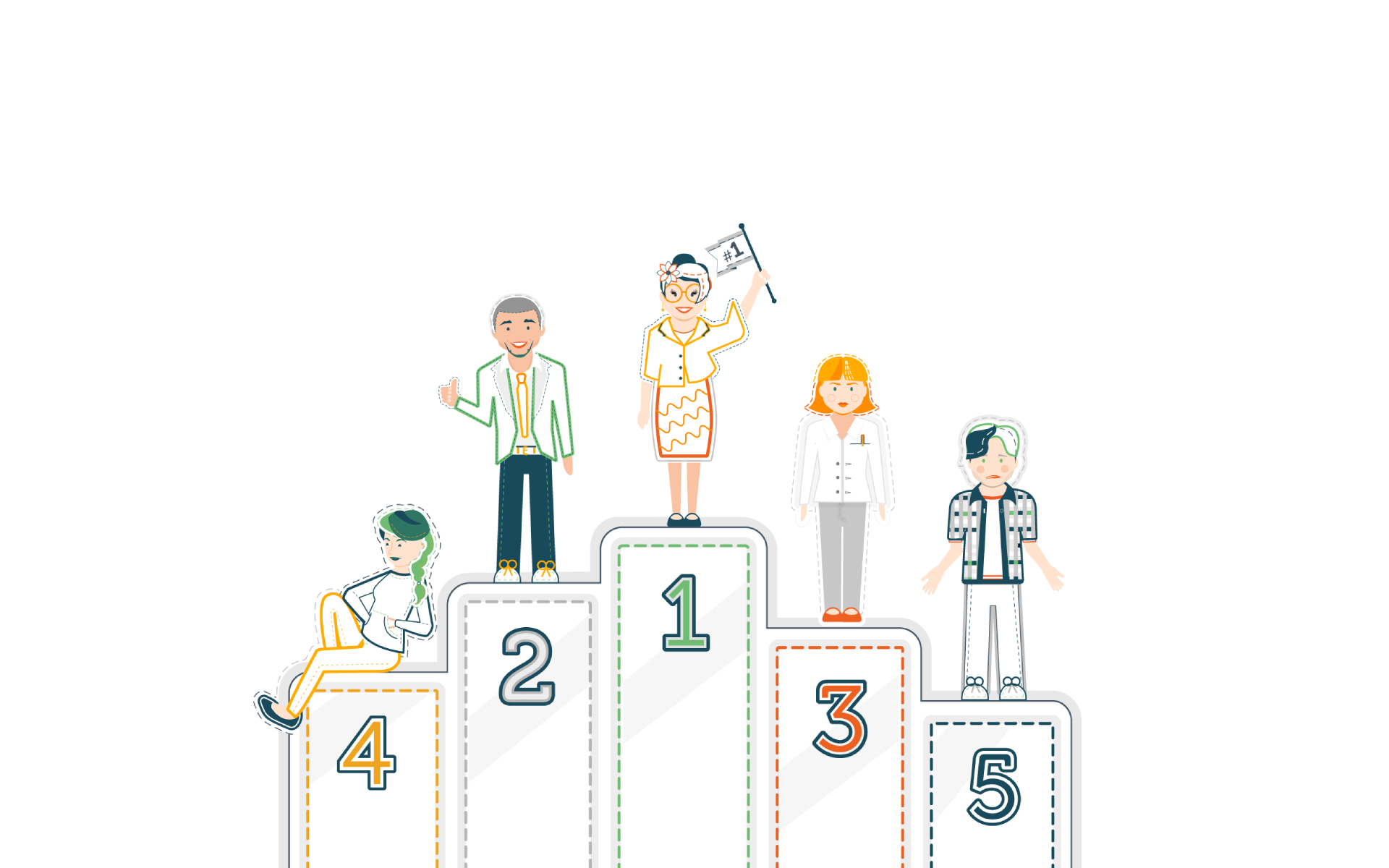The employee recognition program no-no’s
Social recognition has established itself as the norm. By the end of 2016, one report had calculated that more than US$ 5,150 million worth of revenues had been amassed globally and the market is continuing to expand. It’s not that long ago that social recognition was viewed as the new kid on the block.
Now it’s the obvious choice that every forward-thinking company’s adopting. Yet to suggest there is only one approach to social recognition would be misleading. Not all approaches to social recognition programs are equal – and here are some reasons why.
Remember it’s up and across too – not just down
Once, recognition used to flow down the organization. (That’s perhaps a bit optimistic. More like it used to trickle down.) Recognition is not a downwards activity anymore.
When it comes to social recognition, employees initiate over 90% of activity with a manager or director then contributing when viewing the company wall or getting a notification that recognition’s taken place. Effectively, they’re endorsing the recognition of others. They can initiate their own recognition from scratch too of course – it’s become a level playing field. The reward element may still mean they have additional input, some kind of ‘final say’, about reward allocation when it’s set up that way too.
Today’s employee recognition programs, however, are focused on driving participation and increasing engagement by reducing the sense of hierarchy and embracing employee recognition as a matter of full perspective rather than just from the senior management level. The business is sending out a message about trusting employees and valuing their judgment on what is being done well.
Less is more when it comes to rewards
With the exception of the occasional sales payout, bumper annual award or other one-off special circumstance, when it comes to recognition rewards the rule of thumb is that less is most definitely more. The higher the reward, the lower the activity.
Effectively, high reward reduces recognition activity because it becomes about budgets. That could undermine the whole purpose of in-the-moment recognition of accomplishments that aren’t just results and performance-based but also about contributions to, for example, culture and wellbeing. High denominations start to narrow the scope.
They misrepresent the purpose of recognition too. Our relationship with money as a reward is complex and these kinds of monetary rewards are not automatically great motivators. What does getting £100 say to you over getting £25? It’s the getting of ‘something’ that has significance, not the actual monetary amount.
Recognition isn’t a bonus scheme. Let your rewards be a small additional thank you that amplifies the appreciation shown through recognition.
Awards are secondary
Company awards have gained a new lease of life within social recognition platforms. But they should be used with consideration. There’s no better way to undermine your recognition program than by giving, for instance, the “Research employee of the quarter” award to a manager’s favorite who hasn’t actually received a single recognition during that period.
No matter whether you choose to decide awards via a panel of managers or by polling employees, your awards should be integrated into your employee recognition program. Awards should support and effectively be another layer of recognition, rather than a process that’s completely separate from it.
Don’t isolate your recognition system
Does today’s employee recognition technology hit the spot? Yes, it does. But there’s every chance your organization is also putting its resources behind one of the leading workflow apps and it makes little sense to have recognition systems and workflow systems working in isolation from each other.
Your employee recognition activity needs to be upfront and center and that requires seamless integration. Connecting recognition to Slack or Yammer (other applications are widely available) gives complete visibility every time recognition takes place.
Be cautious about gamifying recognition
Is your employee recognition program going to be about me or we? That’s the decision you are making when you start considering giving employees rewards of any sort for recognizing their colleagues.
Over the past few years “gamification” has become considered by some as a form of recognition but what most people call gamification is actually the addition of things like leader boards, badges or other competitive or acquisitive elements into the software. It’s done to encourage people to use the system but essentially it makes the motivation behind it about self-gain.
Read more: Could employee recognition support workplace wellbeing?
Recognition should be about an individual wanting to appreciate others; ultimately a recognition system that’s a spin-off from gamification creates a self-serving culture that’s driven by a desire to receive rather than to give. Beware.


 30 ideas to help a new starter in their first week
30 ideas to help a new starter in their first week
 The value of external feedback in the workplace
The value of external feedback in the workplace
 Expand the power of recognition with Partner Appreciation
Expand the power of recognition with Partner Appreciation